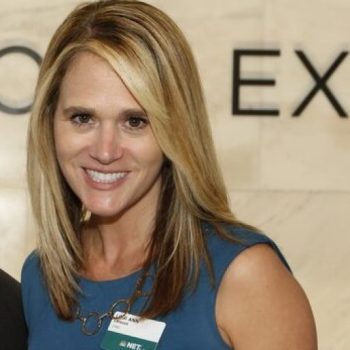From Steve Wozniak and Steve Jobs to Warren Buffett and Charlie Munger, some of the most successful and revolutionary businesses in the world are the product of a partnership. In the shipping industry, one of the most dramatic examples of the power of partnership is Tor Olav Trøim and John Fredriksen.
Like many remarkable relationships, it was a chance encounter that brought Tor Olav Trøim and John Fredriksen together – their mutual involvement in a failed gold mine in the early 1990s. Fredriksen remembered Trøim’s moxie and summoned him to his office a few years later for a meeting that would usher in a new era for shipping and ship finance. “I am the shipping man and Tor Olav knows finance,” is the understated way in which Fredriksen describes why they have achieved so much together.
In his heavy Norwegian accent the two of us spoke at a busy restaurant in New York City. His answers were swift and filled with confidence. “When everyone is screaming about the poor shipping market conditions, we love it. We see opportunity in both the highs and the lows,” he explains in a staccato style that punctuates his rapid-fire ideas.
One part that I loved during the interview is he explained to me he has on his desk a laminated sheet showing all the different ships they own and the cash they are making. The cash is broken down by contract, spot rate, operating cost, installment cost, interest cost, and then it calculates the cost to break even. “In an industry in which the charter rates for capsize bulk carriers can go from $300,000 per day to $3,000 per day within a period of six months, it’s hard to calculate an accurate IRR (internal rate of return). The only thing we know for sure is how much a ship will cost us each day for operating expenses and capital costs.”
They also evaluate all investment opportunities against the laminated sheet to see how they stack up. So while some of their moves appear to be done on the “back of the envelope,” that’s because they know exactly what they want and how much they are willing to pay for it. “If you could buy a new drilling rig for $650 million and charter it out for $650,000 per day or you could buy a VLCC for $80 million and charter it out for $20,000 per day, which deal would you do?” Trøim asked rhetorically at a recent investor event.
Below is an excerpt of his chapter.
The following chapter is under the copyright of Marine Money International
When examining the decisions industry leaders have made during various stages of the shipping cycle, Trøim disagrees with Dagfinn Lunde, Head of DVB Bank’s shipping division, who says that many people fail to learn from the mistakes of others during prior cycles, so they make these same errors themselves. “It’s the same people repeating the mistakes they made in previous years,” Trøim said. “The reason behind this is shipping people are narrow-minded. They invest mostly in things they have invested in before. They say, ‘I am a tanker owner, therefore I’m going to keep investing in the tanker business.’ This is a problem the industry faces. We need more creative thinking in this business.” Trøim sees this lack of vision as the industry’s Achilles heel, just one of the ways in which management teams can do better.
Like Fredriksen, Trøim is critical of the way many public companies are run, famously remarking at Marine Money Week in 2005, “A strong balance sheet is a sign of weak management and the reason behind the weakness is that management can get lazy.” At the root of his statement is a theme Fredriksen reiterated, that only when your own capital is at risk are the interests of management and shareholders aligned. In any deal they make, Fredriksen’s money is also on the line. When companies do not have a personal connection to a deal, Trøim said, “their end game is management protecting the company’s decisions. There is no personal vested ownership. You need be vested in order to succeed.”
This lack of vested interest in their investments is not the only area Trøim says management needs to address. He stressed that companies also get into trouble when they don’t understand how to manage their debt. “Properly allocating corporate debt is key in this business. When you have debt, you need to have an understanding of how much you need to make to service that debt.”
Trøim said when they fail to properly allocate their debt, “that’s when companies get into trouble and you have a situation like OSG. Suddenly you have an Enron situation where you don’t have enough cash flow or assets backing a sizeable amount of debt.” Fredriksen’s Frontline acquired 9.6 percent of OSG in 2010-11, but sold the stake during 2011.
Shaking his head in disappointment, Trøim characterized the current landscape as bad, due to the way public equity holders are being treated, as well as the stigma surrounding the Greek shipping companies. He said management must invest over the long-term and put the investor first to create a strong shipping environment.
Instead of reinvesting profits back into the same industry, thereby taking on further risk, Trøim and Fredriksen firmly believe in diversifying and in returning capital to investors in the form of dividends (which have totaled a staggering $12 billion among all the Fredriksen companies).


One thought on “Tor Olav Trøim- Fredriksen’s Right Hand Man”